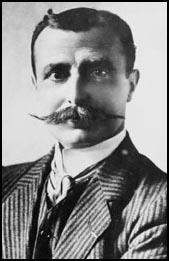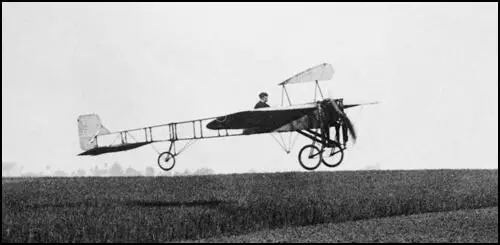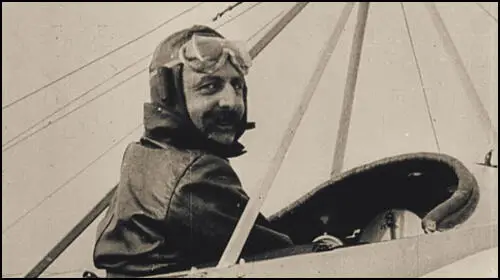Louis Bleriot

Louis Blériot was born in Cambrai, France, on 1st July, 1872. While studying engineering in Paris he developed an interest in aviation. Since the early 19th century Frenchmen such as Jean Pierre François Blanchard and Jacob Degen had building ornithopters, a machine that flies by flapping its wings. In 1900 Blériot built his own ornithopter, but like Blanchard and Degen he failed to get it off the ground.
In 1903, Blériot joined up with Gabriel Voisin, another aircraft designer, to form the Blériot-Voison Company. The company built a floatplane glider, which flew during 1905. The following year Blériot left Voison and started his own company.
Blériot now built a monoplane with a tractor propeller. The plane had low cantilever wings, covered fuselage, a rudder, and a large, all-moving tailplane. The enclosed Antoinette engine drove a four-blade metal propeller. The Blériot VII was tested in 1907, and managed to cover more than 1,640 feet (500 m) at a speed of about 50 mph (80 kpm).
Alfred Harmsworth, the owner of the Daily Mail, was a great supporter of flying and in October, 1908, offered a prize of £1,000 for the first airman to cross the English Channel from Calais to Dover. The idea seemed so preposterous that Punch Magazine decided to poke fun at Harmsworth by offering a prize of £10,000 for the first flight to Mars.

Blériot decided he would make an attempt at winning the prize. He now began work on a new plane, the Blériot XI. It made its first flight on 23rd January, 1909, and early tests showed this was a remarkable aircraft. On 25th July, 1909, Blériot took off from Les Baraques, near Calais, at 4.41am. After covering a distance of almost 24 miles (36.6 km) he arrived at Northfall Meadow, near Dover, at 5.17 am. One man wrote "England's isolation has ended once and for all."
As a result of his achievement Blériot was able to sell the Blériot XI to the French Army. It was also sold to other countries and first saw action during the Italo-Turkish War (23rd October, 1911).

In 1914 Blériot became president of the aircraft company Société pour les Appareils Deperdussin. He renamed the company Société Pour Aviation et ses Derives (SPAD) and turned it into one of France's leading manufacturers of combat aircraft.
The Spad S.XIII appeared in 1917 and soon established itself as the best fighter plane available. Leading Allied aces such as Rene Fonck, Georges Guynemer, Charles Nungesser and Edward Rickenbacker insisted on using this aircraft. It has been argued that the Spad S.XIII was the main reason why the Allies gained control over the skies on the Western Front during 1918. A total of 8,472 of these aircraft were used during the First World War.
After the war, Blériot formed his own company, Blériot-Aéronautique, Aéronautique for the development of commercial aircraft. Louis Blériot died on 2nd August, 1936.

